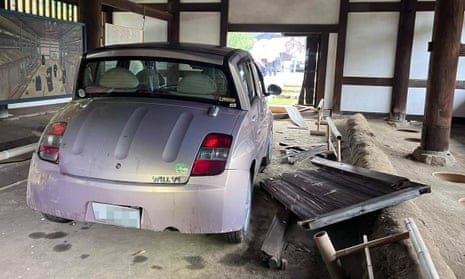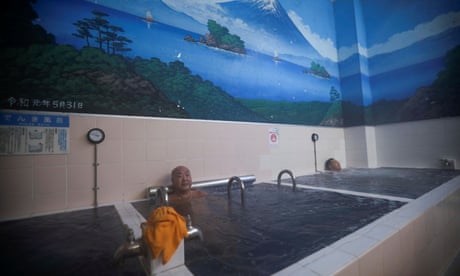Natalie Stechyson - Oct 4,2022 - CBC
With tens of thousands in prize money and the integrity of anglers hanging on the line, a walleye fishing tournament in Ohio turned ugly after an apparent cheating scandal was uncovered last week.
An expletive-laced video posted to social media shows Jason Fischer, tournament director for the Lake Erie Walleye Trail (LEWT), cutting open the winning catch of five walleye on Friday and finding lead weights and prepared fish fillets inside them.
"We've got weights in fish!" Fischer shouts in the video, before winding up his arm and gesturing at the anglers to leave. "Get out of here!" he shouts at the would-be winners. In the background, people in the crowd shout "call the cops" and accuse the men of theft.
The winning anglers, Jacob Runyan, of Broadview Heights, Ohio, and Chase Cominsky, of Hermitage, Penn., were immediately disqualified. They were in line to win about $39,000 Cdn, according to CNN.
The video shows Fischer urging Runyan to leave for his own safety as people hurled insults at him. According to news site Cleveland.com, Cominsky had already locked himself inside his truck in the parking lot.
Previously failed polygraphs: reports
The duo had previously won several other LEWT competitions, according to Toledo newspaper The Blade, and have earned a "considerable" amount of prize money in the past. A Facebook post from February, for instance, announces Runyan and Cominsky as the winners of The 2021 Walleye Slam. The Slam's website lists Runyan as the 2021 winner for catching a fish weighing 12.79 pounds
The pair had been previously disqualified from a 2021 competition for failing a polygraph test, according to an article from Cleveland.com. The news site reports that all the big winners are required to take the test.
The Global Polygraph Network notes that polygraphs can be administered in fishing tournaments to "determine whether the winning anglers have followed the tournament rules, caught the winning fish personally (ie. hook and hand violations) and during tournament hours, used unapproved lures, or weighted or altered the fish."
With tens of thousands in prize money and the integrity of anglers hanging on the line, a walleye fishing tournament in Ohio turned ugly after an apparent cheating scandal was uncovered last week.
An expletive-laced video posted to social media shows Jason Fischer, tournament director for the Lake Erie Walleye Trail (LEWT), cutting open the winning catch of five walleye on Friday and finding lead weights and prepared fish fillets inside them.
"We've got weights in fish!" Fischer shouts in the video, before winding up his arm and gesturing at the anglers to leave. "Get out of here!" he shouts at the would-be winners. In the background, people in the crowd shout "call the cops" and accuse the men of theft.
The winning anglers, Jacob Runyan, of Broadview Heights, Ohio, and Chase Cominsky, of Hermitage, Penn., were immediately disqualified. They were in line to win about $39,000 Cdn, according to CNN.
The video shows Fischer urging Runyan to leave for his own safety as people hurled insults at him. According to news site Cleveland.com, Cominsky had already locked himself inside his truck in the parking lot.
Previously failed polygraphs: reports
The duo had previously won several other LEWT competitions, according to Toledo newspaper The Blade, and have earned a "considerable" amount of prize money in the past. A Facebook post from February, for instance, announces Runyan and Cominsky as the winners of The 2021 Walleye Slam. The Slam's website lists Runyan as the 2021 winner for catching a fish weighing 12.79 pounds
The pair had been previously disqualified from a 2021 competition for failing a polygraph test, according to an article from Cleveland.com. The news site reports that all the big winners are required to take the test.
The Global Polygraph Network notes that polygraphs can be administered in fishing tournaments to "determine whether the winning anglers have followed the tournament rules, caught the winning fish personally (ie. hook and hand violations) and during tournament hours, used unapproved lures, or weighted or altered the fish."
Related video: Something fishy about Lake Erie fishing tournamentDuration 1:04
Runyan and Cominsky later passed the lie-detector test that allowed them to win the Walleye Slam.
"I knew we would pass the Walleye Slam test," Runyan told Cleveland.com in 2021. "Our reputation means the world to us and we would never cheat."

From left, Rossford, Ohio Mayor Neil MacKinnon III, Rossford Walleye Roundup Tournament champions Jacob Runyan and Chase Cominsky, and Bass Pro Shops general manager Tony Williamson celebrate on April 16, 2022 at Bass Pro Shops in Rossford. Prosecutors in Cleveland are investigating an apparent cheating scandal involving the winning pair during a more recent lucrative walleye fishing tournament on Lake Erie.© The Blade/Isaac Ritchey/The Associated Press
'Forever tainting our sport'
In a video statement posted to Facebook Monday, an emotional Fischer called the apparent cheating "one of the most disgusting, dishonest acts that the fishing world has ever seen."
"There's always been stories about dishonesty in competition, but I personally have never seen anything quite like this — in competitive fishing, that is," Fischer said.
"The individuals involved here appear to have put greed and ego in front of anything else, forever tainting our sport."
Fischer also apologized for his use of profanity in the original video, noting that he "acted out of emotion."
He noted the information from Friday's tournament has been turned over to the Ohio Division of Wildlife, which will handle the case and "any potential criminal action from this point forward." The division enforces fishing regulations in the state.
A spokesperson for the Ohio Department of Natural Resources told The Associated Press on Monday that the agency's officers gathered evidence from the tournament and were preparing a report for the Cuyahoga County Prosecutor's Office.
In an email statement to CBC News Tuesday night, Cuyahoga County prosecutor Michael O'Malley said his staff had met with officers from the Ohio Department of Natural Resources that day.
"I take all crime seriously, including attempted felony theft at a fishing tournament. These individuals will be held accountable," he said.


























